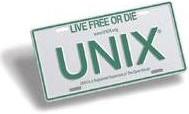
|
X/Open Curses (XCURSES)
XCURSES is not part of the Base Specifications, Issue 6. XCURSES describes a set of interfaces providing a terminal-independent
method of updating character screens that are available to application programs on systems conformant to this part of the Single
UNIX Specification. This document should be read in conjunction with The Open Group Corrigendum U056.
This document is structured as follows:
-
Chapter 1 introduces Curses, gives an overview of enhancements that have been made to this version, and lists specific
interfaces marked TO BE WITHDRAWN. This chapter also defines the requirements for conformance to this document and shows the
generic format followed by interface definitions in Chapter 4.
-
Chapter 2 describes the relationship between Curses and the C language, the compilation environment, and the X/Open System
Interface (XSI) operating system requirements. It also defines the effect of the interface on the name space for identifiers and
introduces the major data types that the interfaces use.
-
Chapter 3 gives an overview of Curses. It discusses the use of some of the key data types and gives general rules for important
common concepts such as characters, renditions, and window properties. It contains general rules for the common Curses operations
and operating modes. This information is implicitly referenced by the interface definitions in Chapter 4. The chapter explains the
system of naming the Curses functions and presents a table of function families. Finally, the chapter contains notes regarding use
of macros and restrictions on block-mode terminals.
-
Chapter 4 defines the Curses functional interfaces.
-
Chapter 5 defines the contents of headers which declare constants, macros, and data structures that are needed by programs using
the services provided by Chapter 4.
-
Chapter 6 discusses the terminfo database which Curses uses to describe terminals. The chapter specifies the source
format of a terminfo entry using a formal grammar, an informal discussion, and an example. Boolean, numeric, and string
capabilities are presented in tabular form.
-
Appendix A discusses the use of these capabilities by the writer of a terminfo entry to describe the characteristics of
the terminal in use.
-
The chapters are followed by a glossary, which contains normative definitions of terms used in the document.
|
